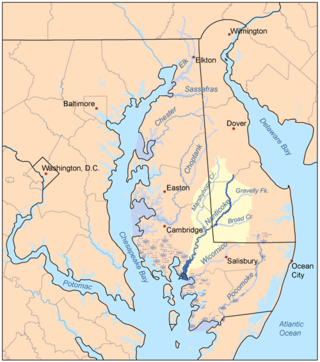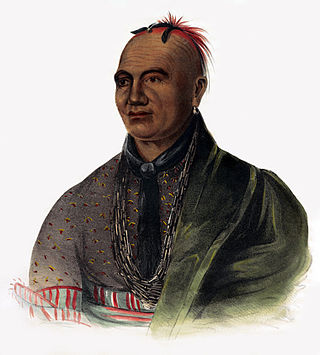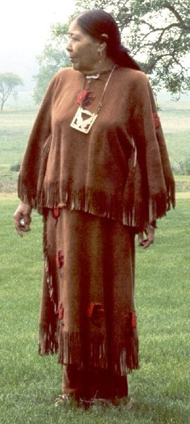
The Mohican are an Eastern Algonquian Native American tribe that historically spoke an Algonquian language. As part of the Eastern Algonquian family of tribes, they are related to the neighboring Lenape, whose indigenous territory was to the south as far as the Atlantic coast. The Mohican lived in the upper tidal Hudson River Valley, including the confluence of the Mohawk River and into western New England centered on the upper Housatonic River watershed. After 1680, due to conflicts with the powerful Mohawk to the west during the Beaver Wars, many were driven southeastward across the present-day Massachusetts western border and the Taconic Mountains to Berkshire County around Stockbridge, Massachusetts.

The Lenape also called the Lenni Lenape, and Delaware people, are an Indigenous people of the Northeastern Woodlands, who live in the United States and Canada.

The Ramapough Mountain Indians are a state-recognized tribe in New Jersey. They were previously known as the Ramapough Lenape Nation or Ramapough Lunaape Munsee Delaware Nation and may be known as the Ramapough Lenape Nation.

Lenapehoking is widely translated as 'homelands of the Lenape', which in the 16th and 17th centuries, ranged along the Eastern seaboard from western Connecticut to Delaware, and encompassed the territory adjacent to the Delaware and lower Hudson river valleys, and the territory between them.

The Algonquian are one of the most populous and widespread North American native language groups. Historically, the peoples were prominent along the Atlantic Coast and into the interior along the Saint Lawrence River and around the Great Lakes. This grouping consists of the peoples who speak Algonquian languages.

The Delaware languages, also known as the Lenape languages, are Munsee and Unami, two closely related languages of the Eastern Algonquian subgroup of the Algonquian language family. Munsee and Unami, spoken aboriginally by the Lenape people in the vicinity of the modern New York City area in the United States, including western Long Island, Manhattan Island, Staten Island, as well as adjacent areas on the mainland: southeastern New York State, eastern Pennsylvania, New Jersey, Connecticut, Maryland, and Delaware.

The Nanticoke people are a Native American Algonquian people, whose traditional homelands are in Chesapeake Bay and Delaware. Today they live in the Northeastern United States and Canada, especially Delaware; in Ontario; and in Oklahoma.

Indigenous peoples of the Northeastern Woodlands include Native American tribes and First Nation bands residing in or originating from a cultural area encompassing the northeastern and Midwest United States and southeastern Canada. It is part of a broader grouping known as the Eastern Woodlands. The Northeastern Woodlands is divided into three major areas: the Coastal, Saint Lawrence Lowlands, and Great Lakes-Riverine zones.

The Christian Munsee are a group of Lenape, an Indigenous people in the United States, that primarily speak Munsee and have converted to Christianity, following the teachings of Moravian missionaries. The Christian Munsee are also known as the Moravian Munsee or the Moravian Indians, the Moravian Christian Indians or, in context, simply the Christian Indians. As the Moravian Church transferred some of their missions to other Christian denominations, such as the Methodists, Christian Munsee today belong to the Moravian Church, Methodist Church, United Church of Canada, among other Christian denominations.

The Unalachtigo were a purported division of the Lenape, a Native American tribe whose homeland Lenapehoking was in what is today the Northeastern United States. They were part of the Forks Indians.

The Piscataway or Piscatawa, are Native Americans. They spoke Algonquian Piscataway, a dialect of Nanticoke. One of their neighboring tribes, with whom they merged after a massive decline of population following two centuries of interactions with European settlers, called them the Conoy.

Piscataway is an extinct Algonquian language formerly spoken by the Piscataway, a dominant chiefdom in southern Maryland on the Western Shore of the Chesapeake Bay at time of contact with English settlers. Piscataway, also known as Conoy, is considered a dialect of Nanticoke.
Hackensack was the exonym given by the Dutch colonists to a band of the Lenape, or Lenni-Lenape, a Native American tribe. The name is a Dutch derivation of the Lenape word for what is now the region of northeastern New Jersey along the Hudson and Hackensack rivers. While the Lenape people occupied much of the mid-Atlantic area, Europeans referred to small groups of native people by the names associated with the places where they lived.

The Delaware Tribe of Indians, formerly known as the Cherokee Delaware or the Eastern Delaware, based in Bartlesville, Oklahoma, is one of three federally recognized tribes of the Lenape people in the United States, the others being with the Delaware Nation based in Anadarko, Oklahoma, and the Stockbridge-Munsee Community of Wisconsin. More Lenape or Delaware people live in Canada.
The Choptank were an Algonquian-speaking Native American people that historically lived on the Eastern Shore of Maryland on the Delmarva Peninsula. They occupied an area along the lower Choptank River basin, which included parts of present-day Talbot, Dorchester and Caroline counties. They spoke Nanticoke, an Eastern Algonquian language closely related to Delaware. The Choptank were the only Indians on the Eastern Shore to be granted a reservation in fee simple by the English colonial government. They retained the land until 1822, when the state of Maryland sold it, in part to pay for the state's share of the District of Columbia.
The Assateague were an Algonquian people speaking the Nanticoke language who historically lived on the Atlantic coast side of the Delmarva Peninsula.

Indian Mills, formerly known as Brotherton, is an unincorporated community located within Shamong Township in Burlington County, New Jersey, United States. It was the site of Brotherton Indian Reservation, the only Indian reservation in New Jersey and the first in America, founded for the Lenni Lenape tribe, some of whom were native to New Jersey's Washington Valley.

The land that is now the State of Maryland in the United States of America was widely populated by indigenous tribes prior to European arrival, however only 1.0% of the state's population self-reported as Native American in the 2010 United States Census. Native Americans have inhabited the area since c. 10,000 BC.












